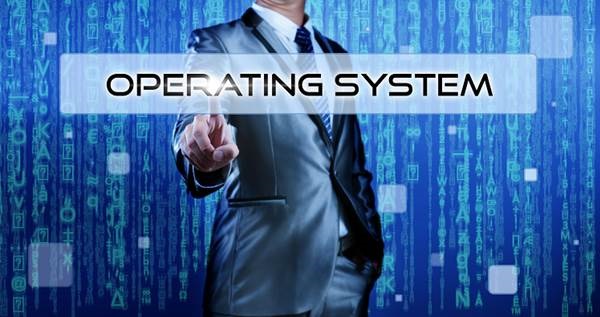Computer Operating System
Operating System
An operating system is the fundamental basis of all other application programs. Operating system is an intermediary between the users and the hardware.
Operating system controls and coordinates the use of hardware among application programs. The major services of an operating system are −
- Memory management
- Disk access
- Creating user interface
- Managing the different programs operating parallel
- Likewise, it controls and manage the hardware’s working

Applications of Operating System
Following are the major applications of an operating system −
An operating system is accountable for the formation and deletion of files and directories.
An operating system manages the process of deletion, suspension, resumption, and synchronization.
An operating system manages memory space by allocation and de-allocation.
An operating system stores, organizes, and names and protects the existing files.
Further, an operating system manages all the components and devices of the computers system including modems, printers, plotters, etc.
In case, if any device fails, the operating system detects and notify.
An operating system protects from destruction as well as from unauthorized use.
An operating system facilitates the interface to user and hardware.
Types of Operating System
Following are the major types of operating system −
- Disk Operating System (DOS)
- Windows Operating System
- Unix Operating System
Let us now discuss each operating system in detail.
Disk Operating System
MS-DOS is one of the oldest and widely used operating system. DOS is a set of computer programs, the major functions of which are file management, allocation of system resources, providing essential features to control hardware devices.
DOS commands can be typed in either upper case or lower case.
Features of DOS
Following are the significant features of DOS −
- It is a single user system.
- It controls program.
- It is machine independence.
- It manages (computer) files.
- It manages input and output system.
- It manages (computer) memory.
- It provides command processing facilities.
- It operates with Assembler.
Types of DOS Commands
Following are the major types of DOS Command −
Internal Commands − Commands such as DEL, COPY, TYPE, etc. are the internal commands that remain stored in computer memory.
External Commands − Commands like FORMAT, DISKCOPY, etc. are the external commands and remain stored on the disk.
Windows Operating System
The operating system window is the extension of the disk operating system.
It is the most popular and simplest operating system; it can be used by any person who can read and understand basic English, as it does not require any special training.
However, the Windows Operating System requires DOS to run the various application programs initially. Because of this reason, DOS should be installed into the memory and then window can be executed.
Elements of Windows OS
Following are the significant element of Windows Operating System (WOS) −
- Graphical User Interface
- Icons (pictures, documents, application, program icons, etc.)
- Taskbar
- Start button
- Windows explorer
- Mouse button
- Hardware compatibility
- Software compatibility
- Help, etc.
Versions of Windows Operating System
Following are the different versions of Windows Operating System −
| Version | Year | Version | Year |
|---|---|---|---|
| Window 1.01 | 1985 | Windows XP Professional x64 | 2005 |
| Windows NT 3.1 | 1993 | Windows Vista | 2007 |
| Windows 95 | 1995 | Windows 7 | 2009 |
| Windows 98 | 1998 | Windows 8 | 2012 |
| Windows 2000 | 2000 | Windows 10 | 2015 |
| Windows ME | 2000 | Windows Server 2016 | 2016 |
| Windows XP | 2001 |
Unix Operating System
The Unix Operating System is the earliest operating system developed in 1970s. Let us consider the following points relating to the Unix Operating System −
It is an operating system that has multitasking features.
It has multiuser computer operating systems.
It runs practically on every sort of hardware and provides stimulus to the open source movement.
It has comparative complex functionality and hence an untrained user cannot use it; only the one who has taken training can use this system.
Another drawback of this system is, it does not give notice or warn about the consequences of a user’s action (whether user’s action is right or wrong).
Analog and Digital
The following table highlights the basic differences between analog and digital −
| Analog | Digital |
|---|---|
| Its functions on physical analog system. | It functions on discrete numbers system. |
| The calculations in this system are primarily converted to equations and later converted into electrical signals. | The calculations in this system are converted into binary numbers (i.e., 1s and 0s). |
| To function, it requires physical analog. | To function, it requires discrete numbers. |
| It gives output in the form of ‘graph’. | It gives output in the form of discrete values. |
| Accuracy comparatively is less. | Accuracy is very high. |
| Performs at a low speed. | It performs at a very high speed. |
| Difficult to make changes, as it is less flexible. | It is highly flexible. |
| It has memory of low capacity. | It has memory of high capacity. |
| Its application is limited to certain applications. | Its application is applicable to a number of applications. |
| It is hardly applicable for the business applications. | It is very much suitable for the business applications. |
| It cannot process alpha-numeric data. | It can process alpha-numeric data. |
| It requires RF technology. | It requires IP networking. |
| Static channel assignment. | Automatic channels exist as required. |


0 Comments